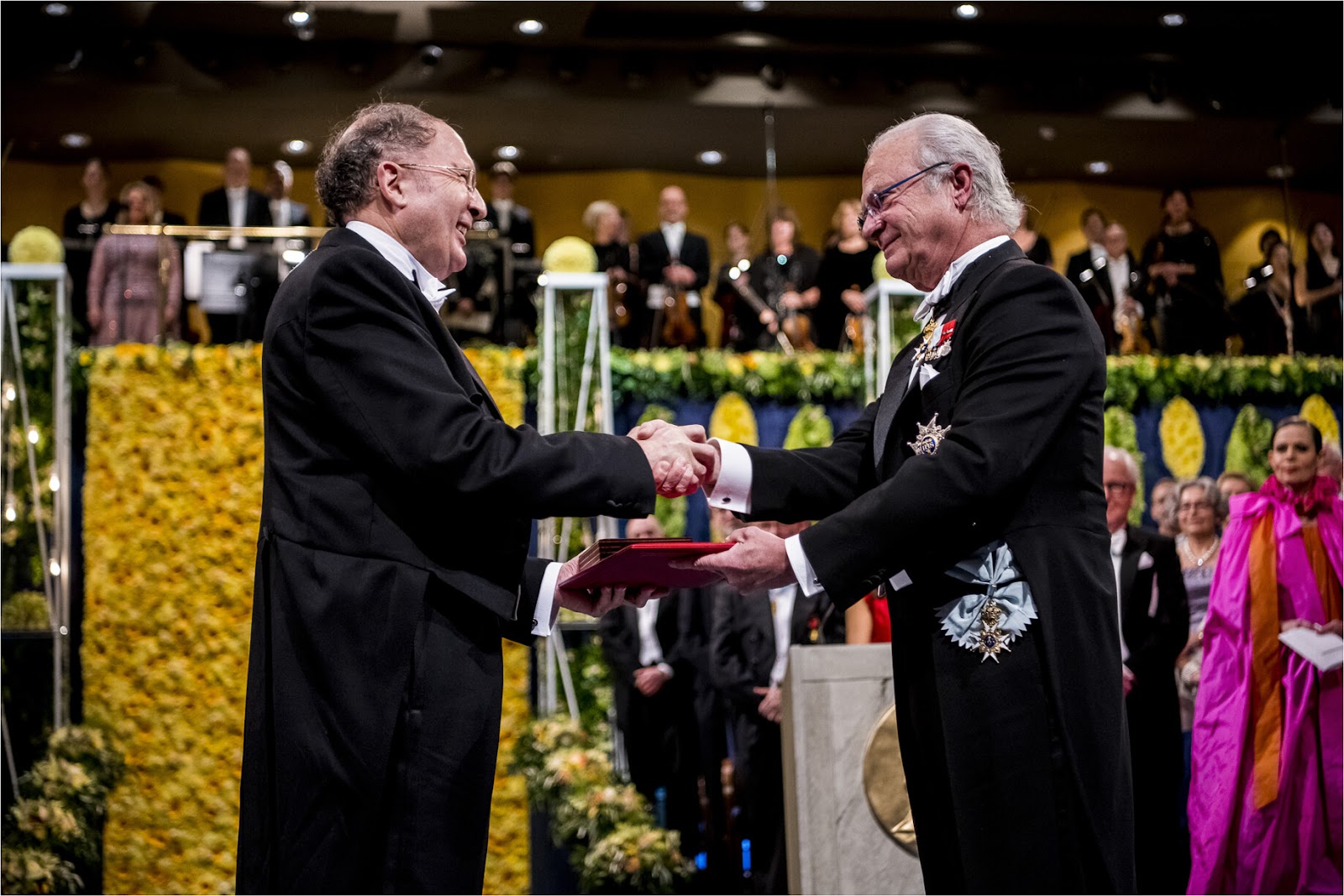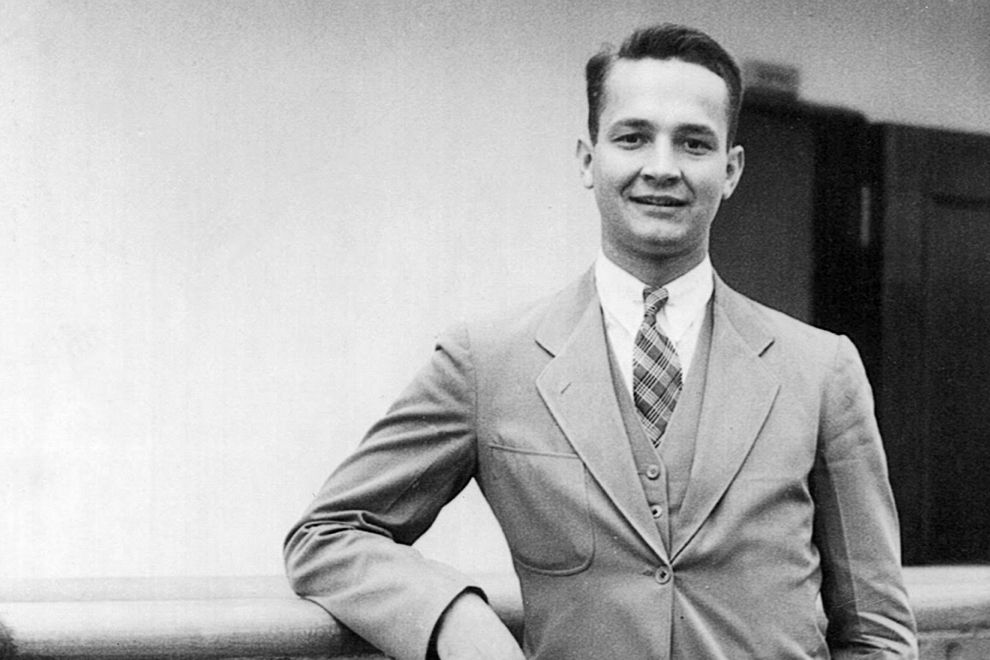
Following In The Footsteps Of An Investing Legend
A Nobel Prize Pedigree… At A Distressed Price
| Below is the most recent issue of Biotech Frontiers, from analyst Erez Kalir.
In addition to hosting Porter & Co. Biotech Frontiers on our website, we also make it available as a downloadable PDF. Subscribers can access this issue as a PDF on the “Issues & Updates” page here. If you have any questions, please give Lance, our Director of Customer Care, and his team a call at 888-610-8895 or internationally at 443-815-4447. Again, thanks for being part of Porter & Co. |
On November 29, 1912, a family in rural Winchester, Tennessee, welcomed a baby boy.
Nestled between the foothills of the Smoky Mountains and the waters of Big Ford Lake in the heart of Tennessee’s Cumberland Plateau, Winchester sits in a place of stunning natural beauty that fed the boy’s curiosity and his capacity for contemplation. As he grew up, his parents encouraged both qualities. They let him buy dynamite to decimate unwanted tree stumps and gunpowder to manufacture his own fireworks.
The boy thrived, earning straight A’s in school that eventually earned him a scholarship to Yale University, where he finished near the top of his class and was president of Phi Beta Kappa. He was awarded a Rhodes Scholarship to study at Oxford, from which he graduated with a law degree in 1936. By 1938 he had found his way to Wall Street to seek his fortune.
It would be hard to overstate the pessimism that prevailed at that time. America had endured nearly a decade of economic depression – the Great Depression – that led to bread lines in New York’s Central Park, ruined the fortunes of many of the country’s leading investors, and even prompted some Wall Street luminaries to commit suicide. Among the hardest facets of all were the market’s false dawns, episodes when stocks seemed to be on their way to a healthy recovery before crashing once again.
It was in this punishing environment that the young man from Tennessee made a deeply contrarian investment – a bet that would both earn him his first fortune and define his reputation as an investor forever. In 1939, using borrowed funds, he bought 100 shares of every New York and American Stock Exchange security trading for less than a dollar. Of the 104 stocks he bought, 34 were of companies then in bankruptcy. His outlay was $10,000. Four years later, he sold this basket of stocks for $40,000 ($1 million in today’s dollars) – a 4x gain and a compound annual return of over 40%.
The young man’s name was John Templeton… and he would go on to become one of the most successful, widely admired money managers of all time. His legacy endures today both in the philanthropic foundation he left behind and in the Franklin Templeton mutual funds that bear his name.

Templeton’s story carries several potently relevant lessons for today’s investors. It reminds us that times of maximum pessimism – when most investors consider stocks to be “untouchable” and many securities have suffered wipeouts – are often the very best periods to buy. And it teaches that in the aftermath of such wipeouts, building a basket of seemingly distressed securities can be a powerful, effective way to profit from their eventual recovery.
Both lessons are applicable to today’s biotech market, where the wipeout in stocks is as severe as mainstream securities experienced in the Great Depression and where pessimism reigns supreme.
In this month’s issue of Biotech Frontiers, we’ll be applying our own variation of Templeton’s approach by launching our second negative-enterprise value biotech basket.
The Original Biotech Frontiers Negative-Enterprise Value Basket
In January 2024, in our very first issue, we launched Biotech Frontiers with a basket of 10 stocks designed to take advantage of a compelling and misunderstood market anomaly.
As we explained in that issue, a company’s enterprise value (“EV”) is defined as its market capitalization less its net cash. We subtract net cash in calculating EV to get at the value of the enterprise itself – the underlying business. If a company gets liquidated, any net cash can be paid out to shareholders on a pro-rata basis. The cash on the balance sheet, though valuable, isn’t deemed to be part of the business’s intrinsic value.
The vast majority of public companies trade with a positive EV – generally 98% to 99% of the market. That’s because the market ascribes some worth to those businesses. When a company trades with negative EV, the market is saying the company is worthless… or less than worthless. In effect, the market is pricing the company for bankruptcy.
It turns out the market is often wrong. In fact, the data shows that buying the stocks of negative-EV companies can lead to spectacular returns. In that first issue on negative-EV opportunities in biotech, we cited a study by the CFA Institute examining every negative-EV stock that traded in the U.S. between 1972 and 2012, a 40-year span. The average 12-month return for stocks in this group was 50.4% – beating the market-average return by over 5x. An update on the CFA study undertaken by deep-value blog Broken Leg Investing, which focused on negative-EV stocks in the U.S. from 1999 to 2016, found an average annual return of 27.4% – also trouncing the Nasdaq Composite Index’s annual return over the same period by 5x.
When we launched Biotech Frontiers in January 2024, we saw a biotech landscape bombed out by the Fed’s campaign to combat America’s post-COVID inflation surge with higher interest rates. As we explained in detail in that issue, rising interest rates are kryptonite for biotech. The Fed’s decision in 2022 to invoke former Chair Paul Volcker’s anti-inflation playbook and raise interest rates aggressively, created an anomaly in the biotech market we had never before witnessed: A situation in which several hundred public biotech companies traded at negative EV.
We carefully chose 10 of these companies for our inaugural negative-EV biotech basket. The results were remarkable: the basket returned 29.7% – with eight winners, only two modest losers, and two stocks that soared more than 100% from our entry prices. We achieved these results in a holding period of less than half a year. The basket’s annualized return was well over 50%.
I recommended that subscribers exit most of these investments in March 2024 because I perceived a disconnect between optimistic market expectations about rate cuts and the likely persistence of inflation. As many of our securities had appreciated considerably in a short time, I wanted to help subscribers lock in gains. That call proved prescient – shortly after our exit, bad monthly inflation numbers prompted a reset of market expectations, and many of our basket constituents did in fact decline.
The Opportunity Today – The Paradox
This context leads to a natural question: Why revisit the negative-EV biotech theme now?
Unlike in January 2024, I don’t foresee much likelihood that the Fed will cut interest rates in the next six months – a sentiment Fed Chair Jerome Powell supported in this week’s meeting. On the contrary, I think it’s more likely that the Fed keeps rates constant or possibly even raises them due to the inflationary effects of Trump’s tariffs and the dollar’s depreciation. So unlike the first time we built a negative-EV biotech basket, I don’t anticipate having a Big Picture catalyst that causes our recommendations to rise in price.
This time, the catalyst will likely come from the biotech sector itself, and from the companies we select for our negative-EV basket. I’m fascinated by a paradox that seems more acute to me today than ever: The scientific and medical advances that emerging biotech companies are propelling forward today are as transformative as any in the history of biotech. And yet financially, biotech stocks have never been cheaper. The proof is the persistence of several hundred negative-EV companies within the biotech universe, an anomaly as striking now as it was in January 2024.
This paradox will eventually resolve itself – not by a collapse in biotech’s scientific progress, but instead by a dramatic upward inflection in share price for the companies driving it. And, of course, we want to “be there” when the inflection happens, even if it takes a while. Owning a basket of negative-EV biotech stocks provides a compelling way to do so because it gives us a margin of safety.
Aficionados of Benjamin Graham, Warren Buffett, and Charlie Munger will recognize the concept of “margin of safety” from value investing. Graham wrote about it in Chapter 20 of his classic, The Intelligent Investor. Margin of safety exists when we buy a security at a significant discount to its intrinsic value – in other words, when our price is substantially less than the value we receive. We generally don’t hear this concept invoked to describe biotech stocks, which in most seasons are quintessential growth equities.
And yet what could provide a greater margin of safety than buying a company at a price of, say, $4 per share when the company has $8 per share of net cash on its balance sheet? Our $4 outlay is therefore covered twice over while we get the company’s intellectual property for free. That’s exactly the type of opportunity the biotech sector is giving us today. But most investors, as they were when John Templeton made his contrarian wager in 1939, are simply too terrified to take advantage of it.
This content is only available for paid members.
If you are interested in joining Porter & Co. either click the button below now or call our Customer Care team at 888-610-8895.